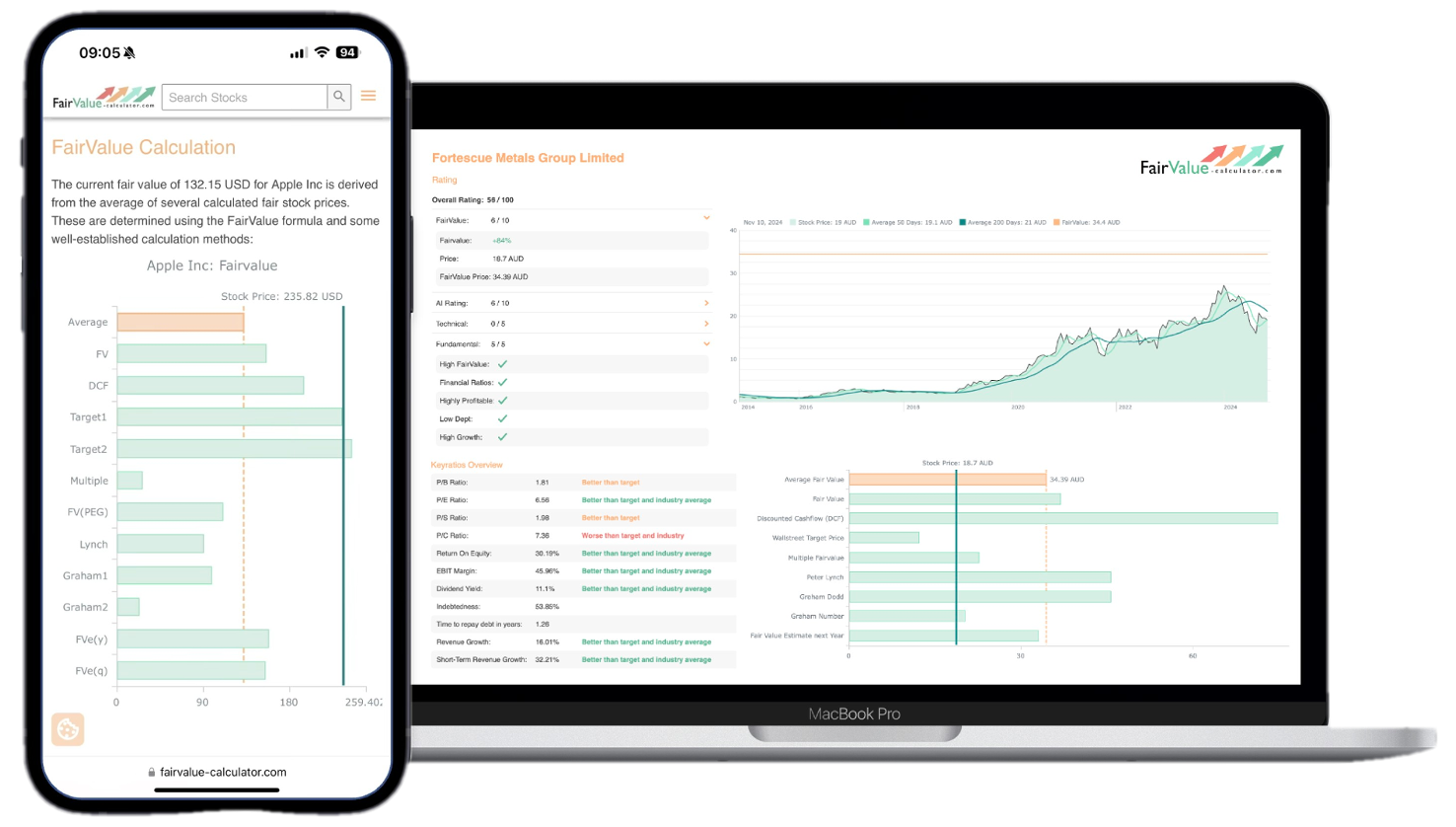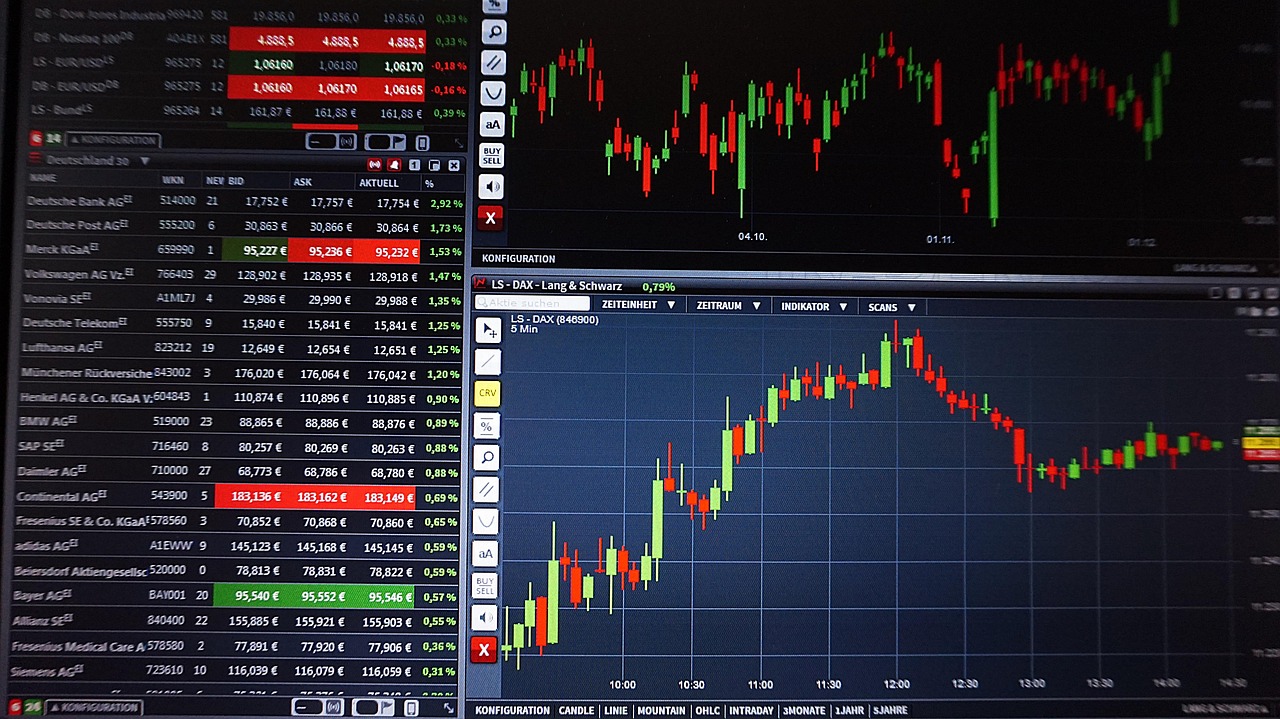Inflation isn’t just a dry economic term that belongs in textbooks or financial news. It’s a critical force that shapes our daily lives, from the prices we pay at the grocery store to the interest rates on our mortgages and loans. When inflation rises, it has far-reaching effects, not only does it erode purchasing power, but it also influences how the Federal Reserve manages its policy levers. Recent data showing U.S. inflation at 2.6% in July highlights an ongoing economic juggle involving wages, consumer spending, and interest rates. This blog post will delve into why these numbers matter to you and how they impact your wallet.
Imagine this scenario: as wages increase, people find themselves with more money to spend, leading to a surge in consumer demand. Prices, however, remain stubbornly high, keeping inflation elevated. In response, the Federal Reserve faces a conundrum, needing to balance between curbing inflation and nurturing economic growth. This delicate dance plays out in the decisions made by Jerome Powell and his team, as they weigh the risks of cutting interest rates too soon or waiting too long. Understanding this economic chain reaction is crucial for anyone who wants to grasp how these forces shape not just the broader economy, but also individual financial futures and investment strategies.
💡 Discover Powerful Investing Tools
Stop guessing – start investing with confidence. Our Fair Value Stock Calculators help you uncover hidden value in stocks using time-tested methods like Discounted Cash Flow (DCF), Benjamin Graham’s valuation principles, Peter Lynch’s PEG ratio, and our own AI-powered Super Fair Value formula. Designed for clarity, speed, and precision, these tools turn complex valuation models into simple, actionable insights – even for beginners.
Learn More About the Tools →
What is inflation in simple terms?
At its core, inflation is the gradual rise in prices for goods and services over time, effectively reducing the purchasing power of each dollar. Imagine that last year a gallon of milk cost $3.00 and today it costs $3.30. That 10% increase illustrates how inflation erodes what your money can buy. Economists typically measure inflation through indexes like the Consumer Price Index (CPI) or the Personal Consumption Expenditures (PCE) price index. These indices track the cost of a standardized basket of items—everything from groceries to utility bills—to gauge how overall prices shift month to month and year to year.
Beyond the statistics, inflation reflects supply-and-demand dynamics in the economy. When demand for products and services outpaces supply, sellers raise prices. Conversely, supply shocks—such as a sudden cut in oil output—can drive costs higher even if demand holds steady. Central banks, including the Federal Reserve, watch these trends closely because sustained high inflation can destabilize economies and hurt consumers. On the flip side, moderate inflation is often seen as a sign of a growing economy where businesses can invest and workers can command higher wages, keeping the economic cycle in motion.
🚀 Test the Fair Value Calculator Now!
Find out in seconds whether your stock is truly undervalued or overpriced – based on fundamentals and future growth.
Try it for Free →Is inflation bad or good for the economy of a country?
Inflation carries both advantages and drawbacks, making its impact on an economy a matter of degree. Moderate, steady inflation—often targeted around 2% annually by many central banks—signals healthy demand, incentivizes investment, and prevents deflation, which can stall growth. In such an environment, businesses expect stable price increases, allowing them to plan expansions and pay raises. Consumers, in turn, may be more willing to spend rather than hoard cash, since holding onto dollars means losing purchasing power gradually over time.
However, when inflation accelerates beyond moderate levels, it can become harmful. Rapid price increases erode real incomes, squeeze household budgets, and introduce uncertainty into both business planning and personal finance. Hyperinflation, as seen in historical cases like Weimar Germany or Zimbabwe, can decimate savings overnight and collapse the monetary system. Conversely, persistently low inflation or deflation—where prices fall—can prompt consumers to delay purchases and businesses to postpone investment, risking economic stagnation. Thus, a balanced inflation rate is often seen as the “Goldilocks” zone: not too hot to derail affordability, but not too cold to freeze economic activity.
Explore our most popular stock fair value calculators to find opportunities where the market price is lower than the true value.
- Peter Lynch Fair Value – Combines growth with valuation using the PEG ratio. A favorite among growth investors.
- Buffett Intrinsic Value Calculator – Based on Warren Buffett’s long-term DCF approach to determine business value.
- Buffett Fair Value Model – Simplified version of his logic with margin of safety baked in.
- Graham & Dodd Fair Value – Uses conservative earnings-based valuation from classic value investing theory.
- Intrinsic vs. Extrinsic Value – Learn the core difference between what a company’s really worth and what others pay.
- Intrinsic Value Calculator – A general tool to estimate the true value of a stock, based on earnings potential.
- Fama-French Model – For advanced users: Quantifies expected return using size, value and market risk.
- Discount Rate Calculator – Helps estimate the proper rate to use in any DCF-based valuation model.
How is American inflation now?
As of July, U.S. inflation stands at 2.6% year-over-year, according to the latest Consumer Price Index data. This rate remains modestly above the Federal Reserve’s 2% target, reflecting ongoing price pressures in areas like housing, used cars, and medical services. Core inflation, which strips out volatile food and energy costs, has been more persistent—hovering around 3.2%—indicating that underlying price increases are more entrenched than headline figures suggest.
Wage growth has been a key contributor to the current inflation rate. With the unemployment rate near historic lows, employers are competing for talent by offering higher salaries, which in turn increases workers’ disposable income. Consumers have responded by spending more on travel, dining out, and other services, keeping demand robust. Although supply-chain disruptions from the pandemic have eased somewhat, lingering constraints in sectors like semiconductors and shipping continue to fuel cost-push inflation. Overall, the current American inflation picture reflects a dynamic mix of rising wages, strong consumer spending, and residual supply challenges.
Why cant we just get rid of inflation as a whole?
Eliminating inflation entirely might sound appealing—prices would remain stable, and the purchasing power of cash would be preserved. Yet zero inflation carries its own risks. One issue is deflation: if prices continually fall, consumers postpone purchases in hopes of getting a better deal later, leading to reduced demand, lower production, and potential layoffs. This cycle can be difficult to break, as seen in Japan’s “lost decade” of the 1990s. Central banks aim for a small, steady rate of inflation partly to avoid this deflationary trap and to keep the economic engine running.
Moreover, moderate inflation provides policymakers with a buffer to stimulate growth when needed. In a zero-inflation world, nominal interest rates would tend to be lower, leaving less room for central banks to cut rates during a recession. By targeting a positive inflation rate, institutions like the Federal Reserve can maintain a higher baseline for interest rates, preserving monetary policy space to cushion future downturns. In essence, a little inflation is the lubricant that helps economies adjust and grow without stalling entirely.
What are the factors that lead to inflation?
Inflation arises from multiple sources that can act independently or in tandem. Demand-pull inflation occurs when aggregate demand for goods and services outpaces supply—think rising consumer spending during a strong labor market. Cost-push inflation happens when production costs climb, often due to higher wages or raw material prices, prompting businesses to pass these increases onto customers. Meanwhile, built-in inflation reflects expectations: if workers and firms expect future price rises, they’ll negotiate higher wages and set higher prices upfront.
Additional drivers include monetary policy decisions, fiscal stimulus, and global supply-chain dynamics. When central banks expand the money supply too rapidly, more dollars chase the same set of goods, causing price levels to climb. Government spending programs—particularly when financed by debt—can also inject excess demand into the economy. On the supply side, events like natural disasters, geopolitical tensions, or pandemics can disrupt production and logistics, leading to temporary price shocks. Understanding which factors dominate at any given time helps policymakers tailor their responses to keep inflation in check.
The Basics of Inflation
Understanding inflation basics starts with its measurement and the rationale behind it. Authorities use indices such as the CPI and PCE to track how a representative basket of goods changes in price over time. These indices weight items differently—food and energy may be volatile, so central banks often monitor “core” measures that exclude them for a clearer signal.
Inflation is not uniform across all sectors. Services like healthcare and education tend to rise faster than electronics or clothing. Knowing these distinctions helps both consumers and investors navigate the cost-of-living landscape. At its simplest, inflation reflects more money or demand chasing fewer goods, leading prices to climb in a familiar economic tug-of-war.
Factors Influencing Inflation Rates
Inflation rates are shaped by supply and demand, monetary policy, and external disruptions. When money supply expands quickly, purchasing power weakens, pushing up prices. Conversely, tight policy can rein in inflation risks but may slow economic growth.
Global factors—oil shocks, shipping bottlenecks, or trade disputes—also play a role. These external pressures can trigger sudden price jumps that ripple through the economy. Central banks must discern which factors are transitory versus structural to set appropriate policy measures.
Relationship Between Inflation and Interest Rates
Interest rates and inflation share an inverse, feedback-driven relationship. Higher inflation expectations often lead central banks to raise interest rates, aiming to cool demand by making borrowing more expensive. Conversely, when inflation is subdued, rates tend to fall to encourage investment and spending.
This interplay forms the backbone of monetary policy. If rates rise too quickly, economic growth can falter, ending in higher unemployment. If rates remain too low amid persistent inflation, price pressures can accelerate, eroding real incomes. Thus, managing the balance between inflation and interest rates is a core Fed challenge.
Impact of Inflation on Purchasing Power
When inflation accelerates, each dollar buys less than before. Savers feel the pinch as returns on cash or low-yield accounts fail to keep up with rising prices, reducing real wealth over time. For wage earners, even modest salary increases can be negated by higher costs for essentials like food, housing, and transportation.
Borrowers, however, may benefit slightly as inflation erodes the real value of outstanding debt. Mortgage holders with fixed rates, for instance, effectively repay loans with “cheaper” dollars over time. Yet this advantage is offset if inflation spikes unpredictably, prompting lenders to demand higher interest rates on future borrowing to hedge against continued price growth.
Role of the Federal Reserve in Managing Inflation
The Federal Reserve regulates inflation primarily through adjustments to the federal funds rate—the overnight lending rate between banks. Raising this rate makes credit more expensive, slowing consumer spending and business investment, which eases upward pressure on prices. Lowering the rate has the opposite effect, stimulating demand to counteract economic slowdowns.
Beyond rate moves, the Fed uses tools like quantitative easing or balance-sheet runoff to influence longer-term yields and liquidity. Communication and forward guidance are equally crucial: by signaling its future policy intentions, the Fed shapes market expectations around inflation and growth, reinforcing its dual mandate of price stability and maximum employment.
Recent U.S. Inflation Data Analysis
July’s 2.6% inflation reading shows a cooling from last year’s peak but remains above the Fed’s 2% goal. Core CPI, which excludes food and energy, stands closer to 3.2%, highlighting persistent price pressures in rent, healthcare, and services. Wages have grown at roughly a 4% pace year-over-year, outpacing headline inflation and fueling greater consumer confidence.
Consumer spending rose by 0.5% in July, driven largely by service categories—travel, dining, and entertainment—suggesting that households feel comfortable dipping into their paychecks. Supply-chain bottlenecks, especially in manufacturing and shipping, have eased but not disappeared, keeping cost-push elements alive. Together, these factors present a nuanced picture: progress toward disinflation, yet enough stickiness to keep the Fed vigilant.
Implications of Rising Inflation for Consumers
For everyday households, rising inflation means tighter budgets. Groceries, gas, and utilities consume larger shares of monthly income, forcing many to delay discretionary purchases or tap savings. Interest rates on credit cards and auto loans often climb in tandem with Fed hikes, raising borrowing costs for essential big-ticket items.
On the investment side, inflationary phases tend to hurt growth stocks—those valued for future earnings—because higher rates reduce the present value of distant cash flows. By contrast, value stocks in sectors like energy and finance, along with real assets such as real estate and commodities, often outperform as they can pass cost increases onto customers or benefit from price rises directly. Historical episodes—like the late 1970s energy shocks or the mid-2000s commodity surge—underscore how inflation and Fed policy can reshape sector performance across the board.
Strategies for Managing Finances During Inflation
Building resilience against inflation starts with your budget. Focus on essentials first and trim discretionary spending where possible. Consider refinancing high-interest debt to lock in rates before the Fed raises them further. Parking a portion of savings in inflation-protected securities, such as TIPS (Treasury Inflation-Protected Securities), can help preserve real purchasing power.
On the investment front, diversify into assets with built-in inflation hedges. Value stocks in consumer staples or energy often fare better when prices rise, while real assets like real estate investment trusts and commodities can appreciate alongside broader cost increases. Maintaining a balanced portfolio that includes shorter-duration bonds can also mitigate losses from rising yields. Above all, stay attuned to wage trends and consumer sentiment data—early signals that inflation might surge or recede.
Future Outlook: Potential Scenarios with Interest Rates
Looking ahead, the Fed faces two broad scenarios. In the first, inflation drifts back toward 2%, allowing rate cuts in late 2024 or early 2025. This path would support further growth and ease borrowing costs, benefiting both businesses and consumers. However, if wage growth remains strong and core inflation stays sticky, the Fed may hold rates at current levels for longer, delaying any relief for borrowers.
Investors and households should watch key indicators: month-to-month CPI and PCE data, labor market reports on job gains and wage growth, and Fed communications—especially the Summary of Economic Projections. Any signs of rising inflation expectations among consumers or sharp upticks in services prices could prompt the Fed to shift course. Staying informed will be crucial for navigating the next phase of this delicate monetary policy dance.
Conclusion: Navigating the Inflation-Interest Rate Landscape
The interplay between inflation and interest rates shapes every corner of our financial lives—from grocery bills to mortgage payments to investment returns. With U.S. inflation at 2.6% in July and wages rising, the Federal Reserve walks a fine line between cooling price pressures and sustaining economic growth.
For consumers and investors alike, the best defense is knowledge and flexibility. Monitor key inflation readings, track wage and spending trends, and heed Fed guidance. By adjusting budgets, diversifying portfolios, and staying alert to data shifts, you can weather the inflation-interest rate dilemma and safeguard your financial future.







